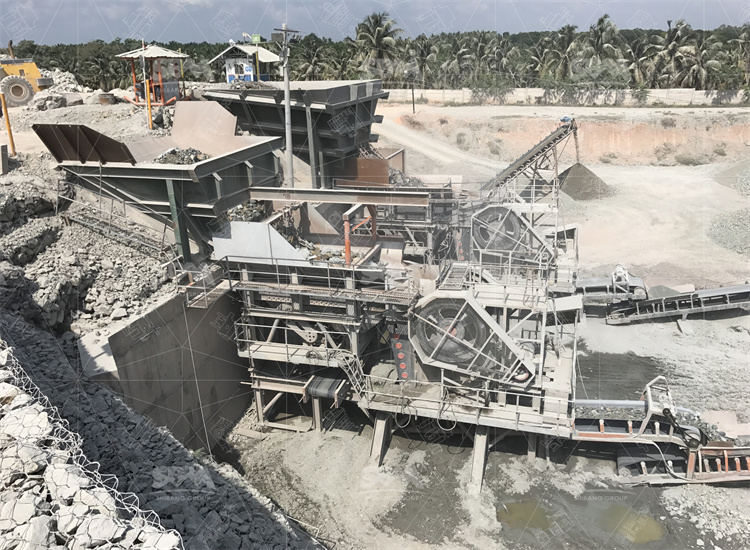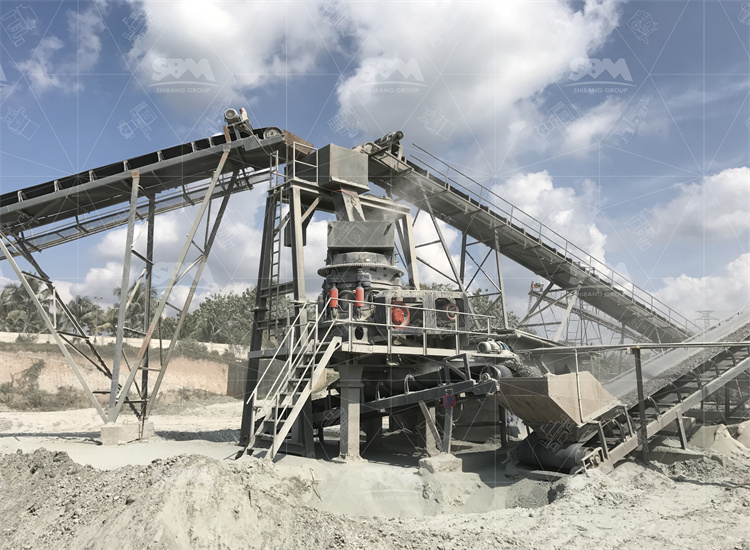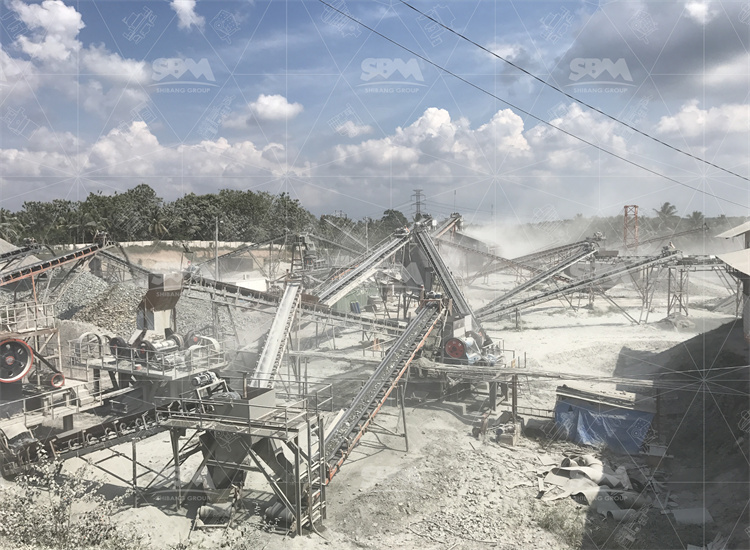SBM offers proven gold ore crushing solutions. They deliver stable throughput, low power use, and simple maintenance. This guide explains principles, specs, real data, and selection advice.
Gold ore crushing is the first step in recovery. SBM designs primary and secondary breakers for hard, abrasive mineral. The system reduces large rock to processable sizes. Moreover, the line links feeders, crushers, screens, conveyors, and dust control. Furthermore, the purpose is consistent: liberate gold particles while controlling fines;
Jaw,cone,and impact breakers operate differently. A jaw breaker uses compressive force between fixed and moving plates. A cone breaker uses eccentric motion inside a crushing cavity. An impact breaker uses high-speed rotor impact. Key parameters include crushing ratio, cavity type, CSS/OSS, rotor speed, and motor power. Crushing ratio equals feed size divided by product size. CSS or OSS controls finished product size through gap setting. RPM affects energy transfer and product shape. Motor power must match torque demands; undersized motors stall, oversized motors waste capital. SBM recommends motor match within 5% of calculated demand;

Below table shows representative performance figures, verified on-site. Values vary with ore hardness and moisture.
| Parameter | Unit | Value range |
|---|---|---|
| Feed size (max) | mm | 300-1200 |
| Product size | mm | 0-50 |
| Capacity | t/h | 5-600 |
| Motor power | kW | 15-560 |
| RPM | rpm | 300-1800 |
| Crushing ratio | — | 4:1–40:1 |
| Specific energy | kWh/t | 0.6-15 |
Crushers consist of frame, crushing chamber, drive, lubrication, and control. Drives use electric motors and gearboxes or direct drive couplings. V-belt, hydrodynamic clutch, or variable frequency drive gives soft start control. Lubrication uses circulating oil or grease; sensors monitor temperature and vibration. SBM configures drives to allow torque reserve around 20%, to handle peak loads. Also, quick-change liners reduce downtime. Moreover, hydraulic setting adjustment simplifies CSS changes.
Gold plants often use primary jaw then cone,or, jaw then impact, followed by screens. For hard quartz-gold ore, sequence: primary jaw → secondary cone → tertiary cone → vibrating screen. For oxide, softer ore, sequence may include impact crushers. Feed humidity,clay content and abrasiveness dictate choices. For sticky ore, add wash screens or scrubbers. Furthermore, dust suppression and water recycling are essential in arid or wet climates.
Real field metrics matter. Typical energy use varies 0.8–8 kWh/t, depending on ore hardness. Average fault rate observed on similar lines: 0.5–2.5% per month. Mean time between failures typically 1,200–4,000 operating hours. Maintenance cycles: daily checks,weekly wear inspection,major overhaul every 12–18 months. SBM reports liner wear life 800–4,500 hours depending on feed. In one project, energy averaged 1.9 kWh/t, downtime under 4% monthly; operators was trained, and spare parts stocked onsite, so faults resolved within hours.
Site: semi-arid highland. Ore type: hard sulfide quartz. Feed size: 800 mm max. Target product: 10 mm for mill feed. Equipment list: J-160 jaw,HP-200 cone,VS-3 vibratory screen,2 conveyors,1 dust unit. Throughput: 45 t/h steady. Energy: 2.1 kWh/t average. Maintenance: liners replaced every 1,000 hours. Result: recovery upstream improved by 7%, and mill throughput rose by 12%.
Site: river floodplain, high moisture. Ore: alluvial, mixed gravel and sand. Process: grizzly → impact breaker → double-deck screen → sluice. Equipment list: IMP-1200 rotor,water wash screen,sluice boxes,tailings pump. Throughput: 120 t/h. Product size: 0–6 mm. Energy: 1.4 kWh/t. Maintenance: rotor inspection weekly; wear parts changed monthly. Outcome: higher fines recovery,lower wear due to controlled feed; operators was pleased with uptime.

Step 1: Define ore properties: hardness (Mohr-Coulomb, or Bond Work Index),abrasiveness,moisture. Step 2: Define capacity target and product size. Step 3: Choose primary type by feed size and mobility. Step 4: Calculate power needs. Example: if capacity 60 t/h and specific energy 2 kWh/t, electric power ≈120 kW, add 20% reserve, choose 150 kW motor. Step 5: Check CSS and cavity for final product. Step 6: Verify structural stiffness for seismic or cold climate loads. Use simple decision tree: hardness >7 → cone, hardness <7 → impact, feed >700 mm → jaw primary, sticky → add washes.
Formula: Power (kW)=Capacity(t/h)×SpecificEnergy(kWh/t)/Efficiency. Assume capacity 80 t/h, specific energy 2.5 kWh/t, efficiency 0.88. Then power=80×2.5/0.88≈227 kW. Select motor 250 kW for reserve. Check torque: T(Nm)=9550×P(kW)/RPM. If RPM 600 then T≈9550×250/600≈3,979 Nm. Ensure gearbox rated above this torque and include safety factor 1.5.
Install on compact concrete pad with grouting. Align motor shafts using laser or dial. Commission with soft start and load test. Train two operators. Keep spare liners, bearings, seals, belts. Daily: check oil, belts, bolts, vibration. Weekly: measure liner wear,check drive alignment. Monthly: replace oil filters,inspect gearbox. Major: change liners and bearings every 12–18 months. These steps cut downtime and reduce fault rate. Moreover, quick access doors ease inspection;
Capex varies with capacity and model. Do not expect uniform prices; compare total installed cost. Consider operating costs: energy,wear parts,and labor. Estimate ROI by combining increased recovery,lower downtime,energy savings. Example: a 10% mill throughput increase often pays for crusher upgrades within 18–36 months. Use conservative figures for payback.
SBM manufactures under quality systems. Certificates typically include ISO9001 and CE compliance. Material tests include hardness, weld inspection, and non-destructive testing. Safety guards meet local code. Moreover, SBM provides FAT and SAT documentation, and certified test reports on request.

Feed gradation matters. Keep fines below 15% at primary feed to avoid choking. Use recirculating water to control dust in dry sites. For cold climates, protect lubrication and install heaters. For sticky clay ore, add scrubbers and sizers before crushers. Regular operator training reduces human error. Stock critical spares for liners and bearings. Furthermore, document operating logs daily; they uncover trends early.
Q1: How to choose between cone and impact for secondary crushing? A1: Choose cone for hard, abrasive mineral. Choose impact for softer or friable feed, or where shape is critical. Q2: What is expected liner life? A2: Expect 800–4,500 hours depending on ore. Track wear with simple gauges. Q3: How to reduce energy use? A3: Optimize feed size,maintain correct CSS, use VFD control, and select efficient motors; replace worn liners early.
SBM gold ore crushers deliver robust, efficient, and maintainable solutions. Choose model by feed, hardness,and capacity. Follow the selection steps given above. Install correctly. Maintain proactively. This approach secures steady production and fast ROI. Contact SBM for tailored configuration and on-site validation.
Whatsapp:+8617329420102
Email: [email protected]
Address: No. 1688, Gaoke East Road, Pudong new district, Shanghai, China.
Online Service : Get Price
We value your feedback! Please complete the form below so that we can tailor our services to your specific needs.
